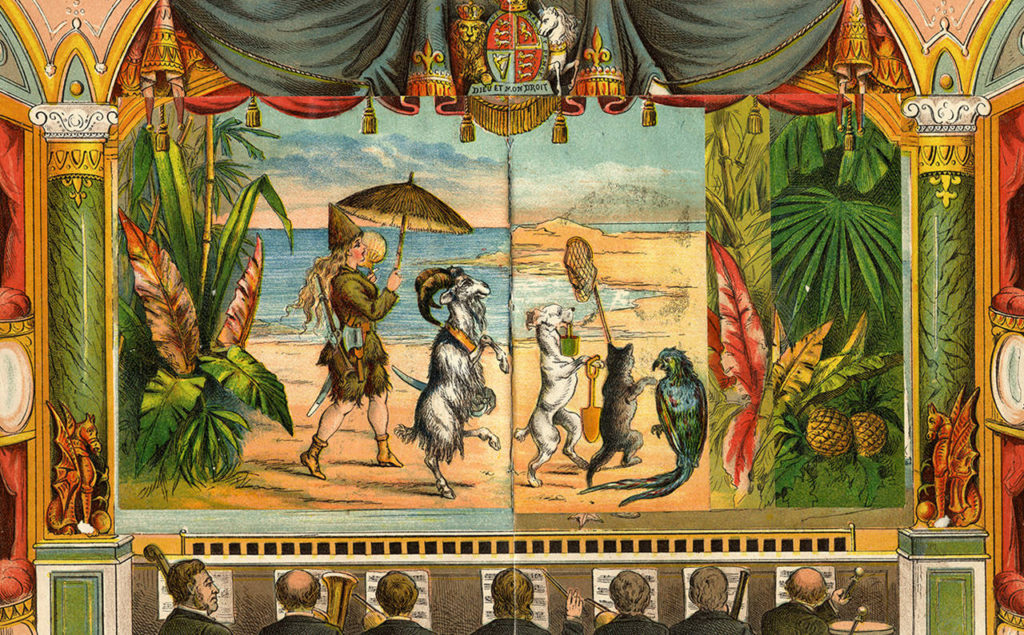Some of Heyer’s heroines unabashedly enjoy the Pantomimes, which she infers are meant for children’s entertainment. I had always envisioned the sort of shadow play I remember from my local children’s theater, but the last post on Sadler’s Wells got me curious.
In fact, the Pantomime came to England from European harlequin and was actually a sort of non-verbal clowning we might still see today in the circus. Usually there was a linear story with scenery changes, and a cast of characters, with the hero as Harlequin.
While a very thorough explanation of Pantomimes can be found both on Wikipedia here and a website dedicated to the Pantomime here a wonderful Regency perspective is provided in a 1819 issue of La Belle Assemblee:
A bit later, in 1823, we find another explanation in The Mirror of Literature, Amusement, and Instruction:
For a sobering perspective from 1823, A. Chalmers writes:
No doubt, like the animations or puppetry of today, the over the top antics and buffoonery masked mature subtext that resonated with adults. For the children and innocents (like some of Heyer’s heroines) the main attraction would have been the spectacle or “living pictures” which in many ways preceded the Silent Film.










